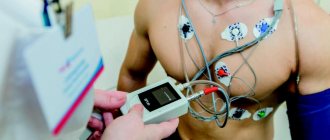Capgras syndrome is a personality disorder in which a person develops and propagates the idea that a loved one or animal has been replaced by a completely different creature in an old guise. Capgras syndrome is often called “delusional syndrome” because a person experiences delusions that involve misrecognizing people or other objects. The disorder can take place in the following forms:
- acute form;
- transitional form;
- chronic form.
Delusional thoughts most often occur in patients diagnosed with paranoid schizophrenia. There are cases when the above manifestations occur due to a head injury. The syndrome is often detected in people with acquired or congenital diseases of the nervous system, especially at an older age.
Medical studies have shown the relationship between the development of this disorder, diabetes mellitus and migraine. According to research, scientists have found that Capgras syndrome affects women about 20 percent more often than men. The information collected during the research gave scientists an understanding of the differences in neuroanatomy between a healthy person and someone suffering from this pathology.
Clinical picture of the disease
To better understand what Capgras syndrome is, we will give several examples in which the clinical picture of the disease is clearly visible.
A 70-year-old married housewife was recently discharged from a local psychiatric hospital. After some time, she again ended up in the same psychiatric hospital for re-examination. A woman was diagnosed with Capgras syndrome - due to her belief that her husband was replaced by a completely different person. Because of this, she refused to sleep with him, locked herself away from him in the bedroom and asked him to give her a weapon to defend herself from the impostor. She also resisted when hospital staff tried to send her to a medical facility. Against the background of her husband's mistaken recognition, she recognized other family members well.
The girl Diana was convinced that there were two completely exact copies of one person in the world. Moreover, the first copy always wanted good, and the other, on the contrary, only evil. Against this background, she was given a psychiatric diagnosis - schizophrenia with Capgras syndrome.
Causes of the disease
Even competent and qualified doctors cannot yet come to a consensus about the root causes of the described illness. At the same time, the most likely hypothesis was put forward, which is traumatic damage to the visual cortex of the brain, which identifies other faces. Sometimes recognition disorder appears after a serious stroke, brain injury, neurosurgery, schizophrenia with manic elements, alcohol dependence and senility.
Those scientists who have not yet formed a clear idea of the occurrence of the syndrome described above do not believe that this is some kind of illness. They claim the following: the symptoms characteristic of this syndrome are just another subtype of schizophrenia.
Psychologists H. Ellis and E. Youngs suggested that patients who suffer from the syndrome form a “mirror image” due to severe damage to certain parts of the nervous system. Many other researchers have reached a similar conclusion after analyzing the symptoms of patients who have suffered brain injuries.
There are also psychiatrists who claim that it is as a result of the devaluation of the unconscious emotional response of excitation that the formation of the above-described syndrome occurs. However, an identical picture in specific patients is not accompanied by delusional manifestations. Therefore, it has been suggested that there is an additional factor involved in the development of delusional thoughts. This factor is the devaluation of judgments.
Causes of Capgras syndrome
Capgras syndrome is complex in nature and varies from patient to patient. It is impossible to identify the causes of the development of this disorder in a particular person without detailed studies of the neural damage that is associated with the syndrome.
The first studies on this topic were related to the possible relationship of brain injuries with Capgras syndrome. Allegedly, after injury, patients are not able to recognize faces consciously, even if they recognize other objects that they knew before. A study dating back to 1984 revealed impaired recognition during autonomic arousal of the brain. It became clear that there are two ways of developing Capgras syndrome - conscious and unconscious.
Studies have also shown the relationship between the presence of doubling paramnesia and the development of Capgras syndrome. This is because these two syndromes can affect the same areas of the brain and for this reason may have the same manifestations (signs).
Since paramnesia most often develops with injury to the frontal lobe of the brain, scientists have suggested that the development of Capgras syndrome is also associated with the condition of the frontal part of the brain. They also noticed that if the connection between another part and the frontal part is disrupted due to injury, this can also cause the development of Capgras syndrome.
Treatment of negative twin syndrome
The Salvation Clinic provides treatment for mental disorders using modern techniques and proven pharmacotherapy. Medicines are prescribed for severe conditions. Treatment primarily consists of individual psychotherapeutic training. Clinic specialists provide on-site consultations at home. We ensure confidentiality. Other arguments for contacting our center:
- assistance with hospitalization;
- competent specialists;
- high quality of psychotherapeutic assistance;
- reasonable prices for services;
- convenient location.
The clinic is located away from the bustle of the metropolis, near a park area. We organize not only treatment, but also leisure. Patients are under supervision 24 hours a day and do not need anything. They do not pose a threat to themselves or to the environment, they can collect their thoughts and improve their mental health. We offer a real solution to the problem when a relative has mental disabilities. Contact us, we will help!
Glossary of terms
In this section we have collected all the terms that you might encounter in this article. Gradually, we will collect from these explanations a real dictionary of a narcologist-psychiatrist. If some concepts remain unclear to you, leave your comments under the articles on our site. We will definitely help you figure it out.
Affective flattening
– a disorder of affect associated with a significant weakening of emotional reactions, insensitivity, spiritual coldness, and indifference. Affective flattening can be either an independent symptom (with autism, schizophrenia, depression, dementia and other diagnoses) or a side effect of taking certain types of medications or drugs.
Migraine
– a neurological disease characterized by severe and painful headaches in one or both hemispheres. However, there are no obvious reasons for migraines - such as recent head injuries or bruises, strokes and brain tumors, etc. Typically, migraine pain is pulsating and is caused by vascular problems rather than tension. In addition, migraine headache is not associated with changes in blood pressure or intracranial pressure.
Paramnesia
– memory disorders associated with false memories – the patient may confuse the present and the past, real and fictitious events. Many patients tend to overestimate their own participation (both guilt and merit) in certain events of the past. Paramnesia is considered a qualitative perversion of memory.
Paranoid schizophrenia
- a type of schizophrenia, which is characterized by a predominance of hallucinations and delusions, but phenomena such as catatonic syndrome, speech problems, affective flattening and others may not manifest themselves (or manifest themselves weakly). Paranoid schizophrenia is the most common. A mandatory symptom is paraphrenic, paranoid or paranoid delusions. The behavior of patients can be hostile and aggressive, most of them become suspicious, tense, intolerant of others, and irritable.
Paranoid delusions
- one of the main symptoms
of paranoid schizophrenia
. Usually associated with persecutory delusions combined with verbal hallucinations.
Paranoid delusion
– delusion associated with an exaggerated idea of simple life situations. The patient’s statements with this type of delusion are logical, consistent and have strong argumentation.
Paraphrenic delirium
- figurative nonsense of fantastic content. Often accompanied by other mental disorders, such as paramnesia, affective flattening, perceptual deception, etc.
Duplicating (reduplicating) paramnesia
- a type of paramnesia in which the patient thinks that there are two (or more) identical places (for example, somewhere there is exactly the same hospital). Typically, reduplicating paramnesia is associated with damage to the frontal lobe.
Signs of Negative Twin Syndrome
A sign of the presence of this disorder can be considered the patient’s subconscious desires and negative thoughts that have become reality. In this case, he will claim that everything that happens is not the work of his hands, but of his mirror double. In cases where normal people experience sympathy or pity, the so-called double is driven only by cold calculation and cruelty. It is in it that all the negative traits that a person hides in himself are manifested.
The patient needs this in order to justify in his own eyes the cruel and wrong actions he carries out. He simply shifts the responsibility onto the fictional double, relieving it from himself. If the delusion of a positive double is expressed in recognizing familiar faces in unknown people, then in the case of a negative double it is characterized by aggressive behavior towards close people.
Historical facts
Capgras syndrome is named after Joseph Capgras (1873–1950), the French psychiatrist who first described the disorder in a 1923 paper co-authored with Jean Lachaux. The material describes the case of a French woman, "Madame M.", who "complained that the corresponding doubles had already taken their places as her husband and other people she knew." Capgras and Lachaux are the first to call this disorder the “Illusion of Doubles” syndrome.
Initially, Capgras syndrome was considered a purely mental disorder of delusion as a symptom of schizophrenia, and of a purely female nature. The syndrome did not receive sufficient attention from specialists until the 1980s, when coexisting organic brain lesions began to be more actively studied.
Today, Capgras syndrome is understood as a neurological disorder in which delusion is primarily the result of organic brain lesions or degeneration.
Main forms of the syndrome
Doctors say that mentally unstable individuals are especially susceptible to this disease. In addition, they distinguish several forms of the disease:
- Fregoli syndrome. This is a “mirror” version of the disorder described above, when the patient “recognizes” his relatives in strangers. Capgras and Fregoli syndrome are very similar in their essence and manifestations.
- The incubus phenomenon is a mental disorder when the patient begins to claim that during night dreams he enters into sexual contact with an imaginary lover.
- The phenomenon of delusional hermaphroditism. Described in 1999. It was first discovered in a young man who tried to convince doctors that he was being persecuted by a literary character who was possessing people around him.
Some patients say that another personality lives in the middle of them, who talks to them, controls their actions and even drinks all the juices of life. Other patients mention microorganisms with which they are allegedly infected.
Symptoms of pathology
The main sign is the belief in the presence of doubles. But in psychiatry there are a number of accompanying symptoms:
- slow mental activity;
- frequent repetition of the same thought (perseveration);
- fragmented thinking;
- absurd conclusions against the background of complex logical reasoning;
- incoherence of speech.
Interestingly, in some cases, a patient with Capgras syndrome clearly sees his double next to him.
But most often he talks about the results of his behavior. And at the same time he is trying to prove that he has nothing to do with everything that happened. Like other mental disorders, Capgras syndrome develops gradually. First, short-term problems with self-identification appear, for about a couple of minutes. Over time, this period grows.
Symptoms and clinical signs
The disease of mental illusions manifests itself in relation to people, less often objects.
Accompanied by the syndrome:
- Delirium, non-existent illusions;
- Hallucinations;
- Mental automatism.
Transitional states can be observed in patients, which allows us to distinguish many classifications of the disease. They will constantly argue furiously about the substitution of a person, without substantiating their point of view in any way, simply because it seemed so to them.
Patients do not use any logical thinking or action.
A person with the syndrome quickly forgets names and faces and gets lost in an area that has always been familiar to him. They do not lose their memory, but perceive everything that happens around them vaguely.
Another symptom is false recognition of people, even those whom the patient simply touched with his hand. It begins to seem to him as if they have known each other for many years, but are best friends.
One of the features of the diagnosis is that the patient may see one family member as a double, but they perceive the rest as usual. Why attention and aggression is focused on one character or another cannot be explained.
The reason will be recent conflicts or old grievances.
How to treat
There is currently no specific treatment plan for Capgras syndrome. As a rule, correction is aimed at the root cause of the disease. For example, a person may have schizophrenia, and a syndrome has arisen against it. Treatment for schizophrenia can correct the disorder and relieve symptoms. But when Capgras syndrome occurs in the context of Alzheimer's, treatment options are limited.
The most effective approach is to create a comfortable environment for the patient, where he will feel safe. For example, some institutions use validation therapy, where the patient's misconceptions are supported rather than refuted. This reduces his anxiety and panic in a delirious state. Hence the conclusion follows: under no circumstances should you convince a person of the falsity of his illusions. The consequences are unpredictable, especially if you are a double whom he does not recognize. In this case, you should give the person for examination to specialists, and leave him alone until the symptoms subside. In fact, the doctors’ recommendations in this case apply to any communication. You need to understand the person, not argue with him when this is not necessary, and acknowledge his feelings.
Is it possible to cure the disease?
It all depends on what caused Capgras syndrome to develop. For example, if it is found in a patient already suffering from schizophrenia, then he can be quickly helped. Properly prescribed medications suppress even a very anxious state, constantly arising fears and suspicions. If the cause of the syndrome is a head injury, then doctors for some time do not prescribe treatment for the syndrome, giving the brain the opportunity to correct its own work. In most cases, the gray matter independently suppresses the imaginary images that breed in its imagination.
As for the stress experienced, in this case it can be quite difficult to heal the patient. Having survived a tragic event, he becomes so isolated in his fictional world that it is not easy to reach him. Moreover, he himself does not want to be “extracted” from the depths of his fantasies. Despite this, prescribed psychotropic therapy helps control the condition, making the person safe for society. After all, obsessed with constant paranoid fears, he is capable of causing enormous harm not only to his family, but also to many other people. Such patients are potential murderers, maniacs and terrorists.
Modern diagnostic methods
A person with such symptoms requires hospitalization - only in an inpatient setting, with constant monitoring, a psychiatrist can make the correct diagnosis. A distinctive feature of this syndrome is that the patient accurately identifies people’s faces (the results, naturally, do not coincide with reality), names them, but cannot tell by what criteria he recognized this or that person.
Of course, some examinations are also carried out that help supplement the collected anamnesis and determine the possible cause of the development of the disorder. For example, tests are needed to determine the content of alcohol and drugs in the body. Tomography, encephalography and other studies may be performed to help determine the presence of organic lesions in the brain.










